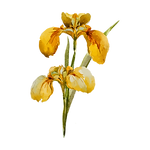Feminism has been around for longer than the 19th century to present day, but only started being notable when Feminist movements became more uniformed and “organized”. The “first wave” (first organized feminist movement for rights) as they dubbed it, in the modern western world; feminists/activists fought and protested for a range of political/legal rights. A significant one that has made an enormous impact on our modern world was women’s suffrage (the right to vote for women). At the start of the first wave, women’s rights activists focused on equal marriage, parenting, contract and property rights, but later on the focus switched to more politically centered topics such as women’s suffrage. The first wave of movement for women’s suffrage started in Europe, independent government New Zealand, giving women the right to vote and the first to give women the right to vote nationally, in 1893. South Australia followed up with granting women the right to vote in 1895, then later in 1902, Australia as a whole when federation came. Though women who were indigenous were still excluded until 1949. France, Sweden and Finland granted women the right to vote but had limits and restrictions. As World War I came into play, suffragettes took their focus into women being in the workforce and died down on the women’s suffrage until later on.
Prominent suffragettes and feminists that were in the movement in New Zealand were Maud Pember Peeves, Kate Sheppard and Mary Ann Muller. A decade later after women were able to vote in New Zealand, feminist Elizabeth Yates became the first female to hold a government post as a mayor (of Onehunga). During 1882, Rose Scott, a noted feminist that resided in Australia held weekly meeting in her home to raise awareness about women gaining the right to vote. She went on to help found the Women’s Literary Society which later on became the Women’s Suffrage League in 1891.
On the other hand, Britain passed the law for women’s right to vote in 1918, but it was only open to women over thee age of 30 and had also owned property or land. After a decade the right to vote expanded to all women over the age of 21. Women's suffrage became a national movement in the 19th century. Women who had strong roles in this UK movement were Emmeline Pankhurst: a key figure whose whole family dominated the scene. Her two daughters Christabel and Sylvia and herself founded and led the Women's Social and Political Union, whose main goal and action was to gain women's suffrage. Emmeline’s husband Richard Pankhurst was also a supporter of women gaining the right to vote, him being the author of the first British Women suffrage bill and the Married Women’s Property Act in 1870 and 1882. Emmeline later on along with her two daughters went to the mainland of the suffrage fight, they joined the National Union of Women’s Suffrage Societies and also founded the Women’s Social and Political Union in 1903.
The WSPU took a militant stance against the government because of the many false promises and many years of no action. This form of movement/idea inspired suffragettes globally, a notable one in the United States by Alice Paul. Another important figure in the U.K’s suffrage movement was Emily Davies who was an editor for the feminist publication “Englishwomen’s Journal”. Her influential feminist ideas were expressed on paper and published during the 20th century. Emily was also a supporter of Women’s educational rights in addition to women’s suffrage, her sword in the battle for women’s suffrage were her words on paper.
Now on the other side of the pond, the United States, the right to vote slowly built up to the nation wide legal right over decades to 1920. Determined, Susan B. Anthony was a well-known suffragist, she and some other strong will-powered suffragists attempted to vote in the 1870’s, when denied they filed lawsuits. Susan was the only successful women to vote in 1872 but was then arrested and trialed guilty in a very publicized trial, that only added more fuel to the fire. In 1916, Alice Paul formed the National Women’s Party (NWP) a militant group (inspired by Emmeline Pankhurst). Protests happened at the White House, the suffragettes determined to have the right to vote. Their hard work paid off later in 1920 when the 19th Amendment became part of the U.S Constitution.

First Wave


Click on image to enlarge
Click on image to enlarge
Click on image to enlarge
Click on image to enlarge
Click on image to enlarge
Click on image to enlarge










